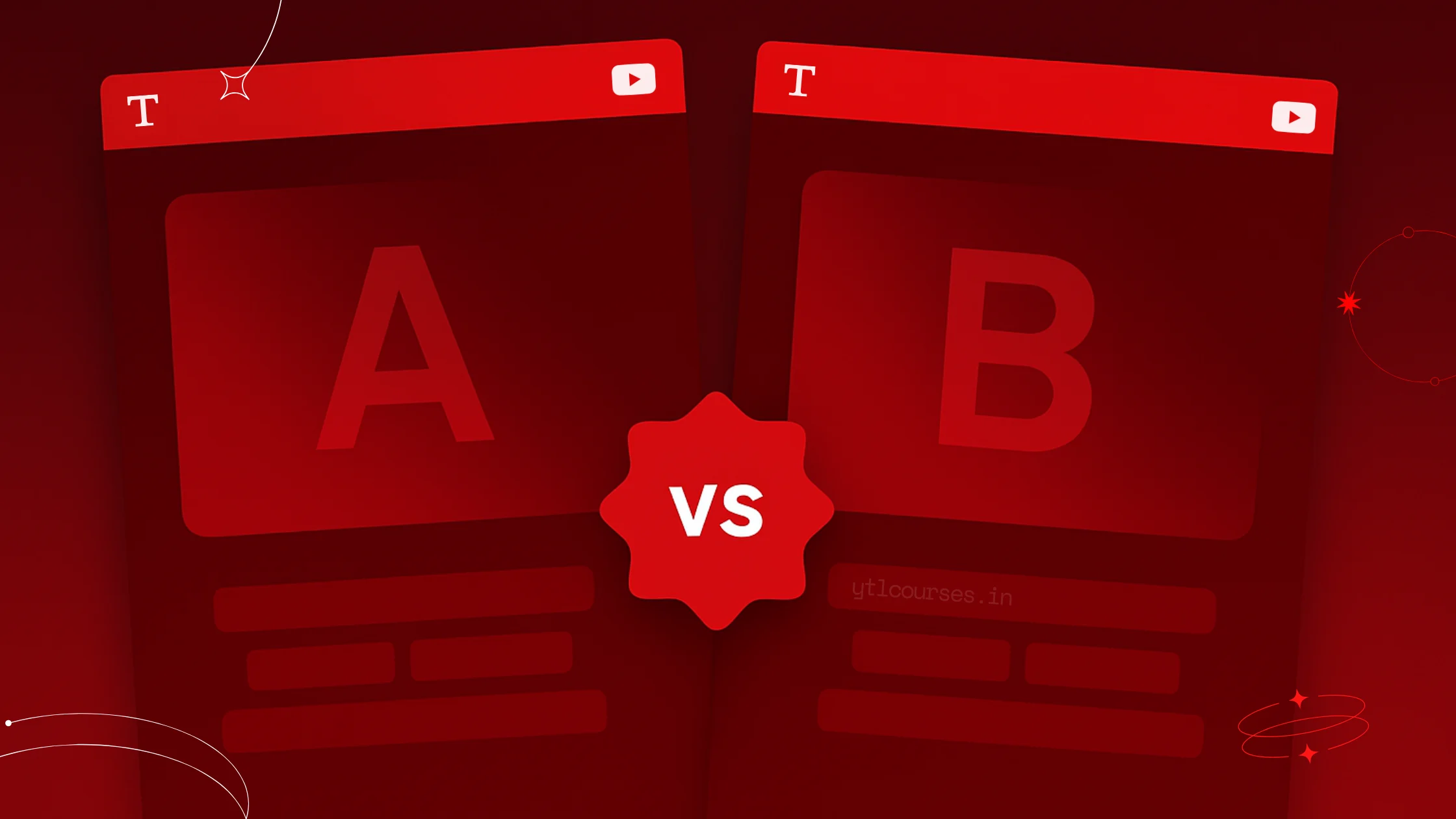October 14, 2025

YouTube has officially introduced Title A/B Testing, one of the most awaited tools for creators who want to optimize video performance using data, not guesswork. Announced in the Made on YouTube 2025 event, the new feature lets creators test multiple versions of a video title and automatically select the one that performs best. This update marks a big shift in how creators approach YouTube SEO, giving them direct insight into what kind of titles drive engagement, retention, and visibility.
Title A/B Testing allows creators to upload up to three different titles for the same video. YouTube then shows each version to different segments of viewers and measures how they respond. Over time, the platform analyzes key metrics like watch time share, click-through rate (CTR), and viewer retention to determine which title performs best. Once the system identifies the winning version, it can automatically apply that title to the video ensuring that the most effective title remains active for long-term performance.
This feature expands on YouTube earlier “Test & Compare” tool for thumbnails, which followed a similar testing process. By adding titles into the mix, YouTube now allows creators to optimize both visuals and wording the two most important factors influencing clicks.
Creators spend hours crafting titles that balance curiosity, clarity, and keywords. Yet, until now, they could only guess which one would work best. YouTube recognized that titles directly affect how users interact with search results and recommendations. By introducing Title A/B Testing, YouTube aims to make content optimization more data-driven. Instead of manually changing titles (which could confuse the algorithm or hurt performance), creators can now test ideas safely within YouTube Studio and let real audience behavior guide the decision.
It’s a smart step forward for SEO on YouTube. Traditional YouTube SEO focused on keywords and tags, but today, engagement metrics like watch time, CTR, and audience retention play a far greater role in ranking. Title A/B Testing directly influences these metrics. When a certain title attracts more engaged viewers, it sends strong positive signals to YouTube recommendation system. As a result, that video is more likely to appear in search results and suggested feeds. In short, this tool helps creators discover the language and phrasing that truly resonates with their audience improving SEO naturally through better engagement, not keyword stuffing.
To make the most of Title A/B Testing; Test titles that are truly different, change tone, emotion, or keyword placement. Keep thumbnails consistent, if you’re testing only titles, so you isolate one variable. Allow enough time for YouTube, to gather meaningful data before judging results. Avoid testing multiple things at once, and use what you learn to refine future uploads. Over time, these insights can transform how you write titles across your channel.
The introduction of Title A/B Testing shows YouTube commitment to empowering creators with built-in tools for smarter optimization. Along with upcoming AI-powered assistants like Ask YouTube Studio, creators are moving toward a future where decisions are guided by real analytics rather than intuition. By combining creative storytelling with measurable results, this new feature bridges the gap between art and algorithm helping creators build stronger, more discoverable content strategies. YouTube Title A/B Testing isn’t just a convenience feature, it’s a strategic advantage for creators who want to improve their SEO through engagement-driven insights. It doesn’t replace creativity it enhances it by showing what truly connects with audiences.
The YTL Courses
Welcome to The YTL Courses, here you will get best category of digital products at affordable prices.
Please send your name and contact details if you have any query.
WhatsApp Us
🟢 Online | Privacy policy
WhatsApp us